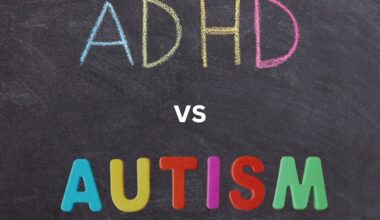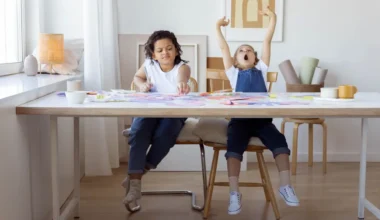Autism spectrum disorder, or ASD, can be difficult to identify and often confused with other diagnoses, particularly in young children. As a teenager, you may notice that you are withdrawing, easily agitated, anxious, or confused. However, much of this could easily be considered ‘normal’ teenage behavior. Regardless if you need a free autism test for teens?? I’ve got you covered!
Key Takeaways
- Autism is known as a spectrum condition because autistic children may exhibit a variety of symptoms, cognitive ability, language skills, and behaviors.
- Children on the autism spectrum exhibit traits from both categories at a young age, including babies and toddlers. Signs can be found in babies as young as one-year-old, and signs of autism frequently occur in children who are two, three, or four years old.
- High-functioning autism are individuals without cognitive impairment characterized by verbal proficiency, intelligence, and talent but may suffer from social communication difficulties.
- Some indicators of autism include failure to react to their own names, regularly resisting or refusing to attend school because they are overwhelmed, upset, or confused, and performing the same action over and over and over again.
Is It Possible to Get a Reliable Online Autism Test For Teens?
Only a mental health expert is qualified to diagnose autism. However, if you’re seeking an online autism test, our autism test for teens will help you determine whether the behaviors you’ve observed in your teens are indicators of autism or something else.
You’ll also discover links to articles where you can learn more and prepare for a consultation with a mental health specialist who can diagnose your child.
What Are the Signs of Autism?

Autism is known as a spectrum condition because autistic children may exhibit a variety of symptoms, cognitive ability, language skills, and behaviors. They range from nonverbal to highly verbal. However, some of these children’s autism symptoms overlap.
Autism symptoms are divided into two categories: social-communication challenges and restrictive, repetitive behaviors (RRBs). RRBs are repetitive body motions or behaviors that “restrict” a person’s interaction with the environment.
Children on the autism spectrum exhibit traits from both categories at a young age, including babies and toddlers. Signs can be found in babies as young as one-year-old, and signs of autism frequently occur in children who are two, three, or four years old.
Please keep in mind that the following information only covers a few of the most common characteristics of autism. It is unlikely that a teenager will exhibit all of these features. It’s important to remember that only a competent expert can conduct an autism assessment.
Social communication indicators in babies and toddlers under three years old:
- Failure to react to their own names.
- Disinterest in giving, sharing, or showing objects of interest
- Aversion to display of affection.
- Do not apply gestures to communicate.
- Prefer solitary play.
- Hasn’t spoken a word at 18 months of age.
- Cannot speak two-word phrases by age two.
Social-communication signs of autism in older children(teens):
- Difficulty maintaining a reciprocal or back-and-forth conversation.
- Lack of eye contact.
- Difficulty understanding and interpreting others’ body language and using it themselves
- Difficulties in recognizing others’ emotions, responding correctly to various social situations, and understanding social relationships.
- Aversion to shows of affection.
- Prefer solitary play.
- Have a strong desire to set and follow rules
- Use more literal language when communicating rather than non-literal like sarcasm
Repetitive and restricted behaviors that are signs of autism:
- Performs the same action over and over and over again.
- Focuses solely on minor details
- Toys or objects are lined, sorted, or organized instead of being played with.
- Gets fixated on specific topics or objects.
- Minor alterations in everyday routine can cause a major upset.
- Has exceptional sensory sensitivity.
Additional characteristics that are frequently related with, or can be common co-occurring among teenagers on the spectrum are:
- Unique sleeping patterns. For example, waking up at the same time every night or remaining awake long after you’ve gone to bed.
- Regularly resisting or refusing to attend school because you are overwhelmed, upset, or confused.
- Feeling anxious or uncomfortable if you are in a new social situation or have to go somewhere you have never been before.
- Feelings of depression may arise when you believe that people do not understand most of your actions or choices. This can make you feel ‘on the outer’.
- A sensory ‘overload’ or build-up can cause you to get agitated, disturbed, or angry, prompting you to lash out or exhibit behaviors that others view as alarming.
- An eating disorder can arise during periods of intense stress or worry, such as when a teenager begins high school.
- Organizing presents challenges. You may find it tough to balance schoolwork and extracurricular activities.
What Is High-Functioning Autism?

Individuals with autism who do not have cognitive impairment are often referred to as having high-functioning autism. They may be highly verbal, excel in school, college, and the workplace, and possess great intelligence or talent. However, people with high-functioning autism may suffer from social communication difficulties, making it difficult for them to function socially.
They may have trouble with changes in routine and be overly sensitive to sensory stimuli such as bright lights or loud noises. They are also called “neurodivergent,” because their brains function differently than those of ordinarily developing or “neurotypical” persons.
What Is Profound Autism?

The term “profound autism” refers to individuals on the other extreme of the autistic spectrum. They are cognitively handicapped, with an IQ of less than 60, and nonverbal. They are severely incapacitated and will need lifelong assistance with daily activities.
When Can a Child Be Tested for Autism?
Children as early as 12 months old can show signs of autism, and the indicators become more obvious as they grow older. Some specialists believe that a professional’s diagnosis is reliable by the time a child reaches the age of two. However, many children are diagnosed later, as toddlers, elementary school students, or teenagers.
Consider Getting an Autism Assessment as a Teen.
It is a personal choice to get an autism assessment as a teenager. Some people find it overwhelming to consider receiving an autism diagnostic because there are so many processes involved.
As a teenager, remember that you know yourself best, and if you suspect you may be autistic, tell your parents, family, or a trusted person. Parents and trustworthy family members may be able to provide information and guidance on the diagnostic procedure and emotional support because they are familiar with you. You can seek guidance from a trained specialist to gather information to help you make your decision.
Some of the advantages of seeking an autism assessment sooner rather than later may include:
- You may receive the assistance and support you need.
- If you reveal your diagnosis, your school and teachers may better understand your abilities, skills, learning preferences, and needs, resulting in more effective support and a better educational experience.
- Understanding yourself better may help you develop a stronger sense of self-identity.
- You may feel more confident knowing you are part of a wider group of teens on the spectrum!
Seeking a Diagnosis

How to Getting Started
Teenager assessments require adequately qualified health experts to acquire and analyze a variety of developmental, historical, and current data in relation to autism criteria.
There are a few options for getting an autism assessment/test as teens:
- For information on assessments, contact your state or territory’s autism association.
- Speak with a certified health practitioner who has experience assessing and diagnosing autism.
- Make an appointment with your general practitioner to discuss your concerns and, if necessary, refer you to a skilled health expert with experience assessing and diagnosing autism.
- You can also refer yourself or your teen for an assessment.
There are several government-funded services dedicated to the assessment and diagnosis of autism. You can contact these teams directly, although you may need a referral from your general practitioner or pediatrician.
There are also private practitioners and institutions that charge a fee for assessments.
Who Will Be Involved in the Assessment?
The number of professionals engaged in conducting an autism assessment will vary depending on where you go.
If you see a private professional, the examination will usually be conducted by one person, such as a Speech Pathologist or Psychologist. In some states or situations, you will need to see two different types of professionals to complete an autism assessment before receiving a diagnosis of autism. It is best to speak with your local autism support service provider to determine what is required in your state or territory.
However, if you go for an assessment from a government-funded institution, several professionals will often be included in any diagnostic evaluation.
According to Australia’s National Guideline for the Assessment and Diagnosis of Autism Spectrum Disorders, the following experts may participate in an autism assessment as part of a multidisciplinary team.
- Medical practitioner
- Nurse Practitioner
- Occupational Therapist
- Psychologist
- Social workers
- Speech Pathologist
- Paediatrician
- Child psychiatrist
- Neurologist
Important: Only experts who have completed extra autism diagnostic training can provide an autism diagnosis.
Where Can I Get an Assessment?
There are government-funded and private services available. Sometimes there is a longer wait time for government-funded services.
Autism Test for Teens
This quiz is designed to help identify potential signs of autism in teenagers. Please note that this is not a diagnostic tool and should not replace professional medical advice.
Frequently Asked Questions
How Do I Know If I Am Slightly Autistic?
The main signs of autism are:
- Having trouble understanding what people are thinking or feeling.
- Becoming extremely anxious about social situations.
- Having trouble making friends or preferring to remain alone
- Unintentionally appearing blunt, unpleasant, or uninterested in others
- Finding it difficult to express how you feel You might not understand sarcasm or expressions like “break a leg” as you take things literally.
- Additionally, you may have a consistent routine and become anxious when things change.
How Is Autism Diagnosed in a 14-Year-Old?
First, consult a paediatrician, psychologist, or psychiatrist who specializes in autism. They will be able to assist you through the autism diagnosis process, which includes monitoring your teen’s development against a checklist of common developmental milestones and conducting an in-depth behavioral evaluation.
What Is Smart Autism Called?
Savant syndrome is a rare but extraordinary phenomenon in which people with major mental disorders, such as autistic disorder, have an ‘island of genius’ that stands in stark contrast to their overall handicap. As many as one in every ten people with autism show such exceptional abilities to varied degrees, while savant syndrome can also arise in other developmental impairments or types of central nervous system injury or disease.
What Does Level 1 Autism Look Like in a Two-Year-Old?
Children with level 1 autism may struggle to understand and respond to abstract or ambiguous questions, hold a conversation on a specific topic, or adapt their communication style to the situation or audience.
Template to Start the Autism Assessment Process for Teens.pdf
Related Articles
- What Are Autism Facial Features: All You Need
- Mental Illness; Top 5 Misconceptions, Causes, Treatment and Management.
- What to Think When Meditating: Best 2024 Practices






